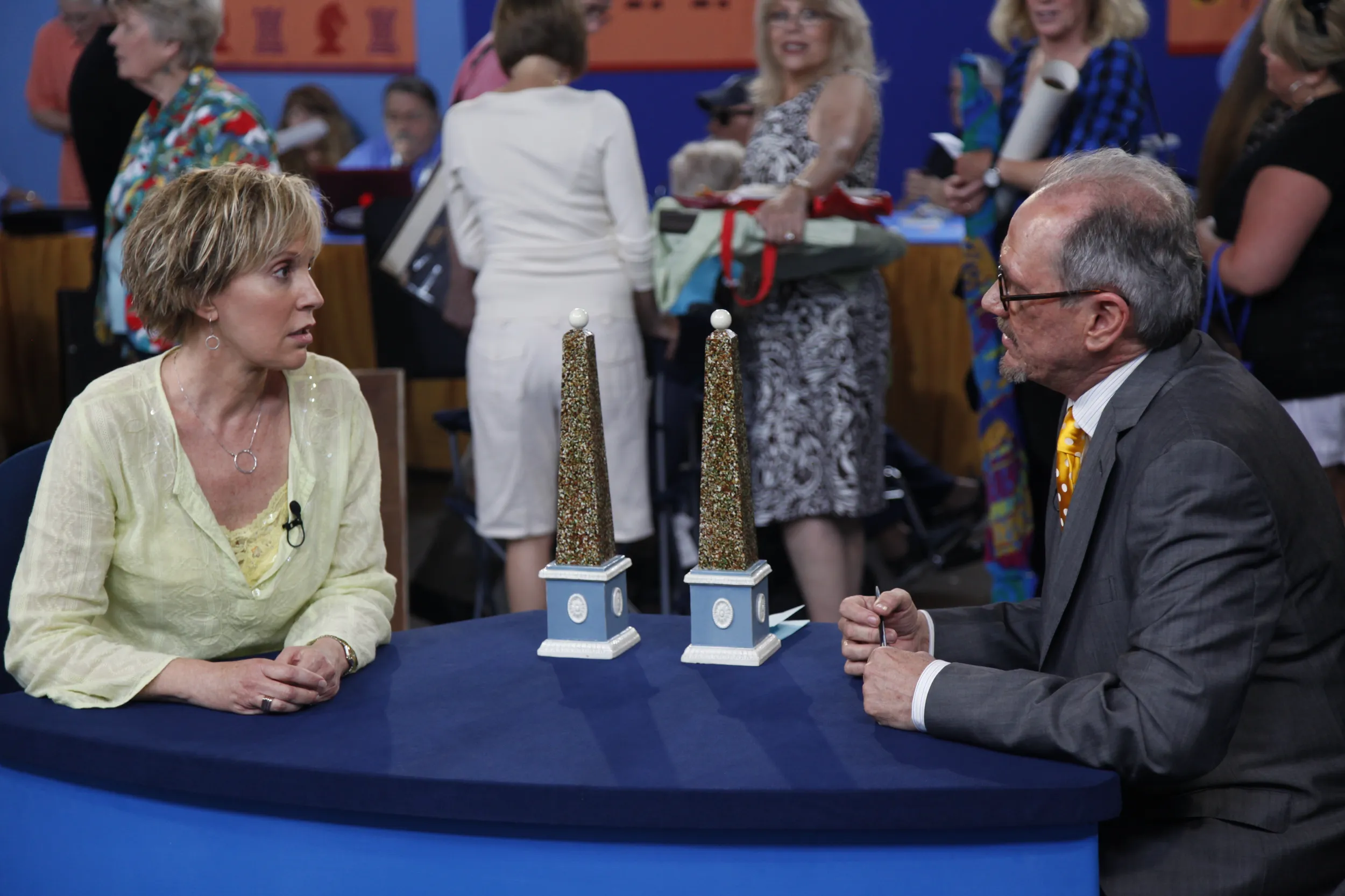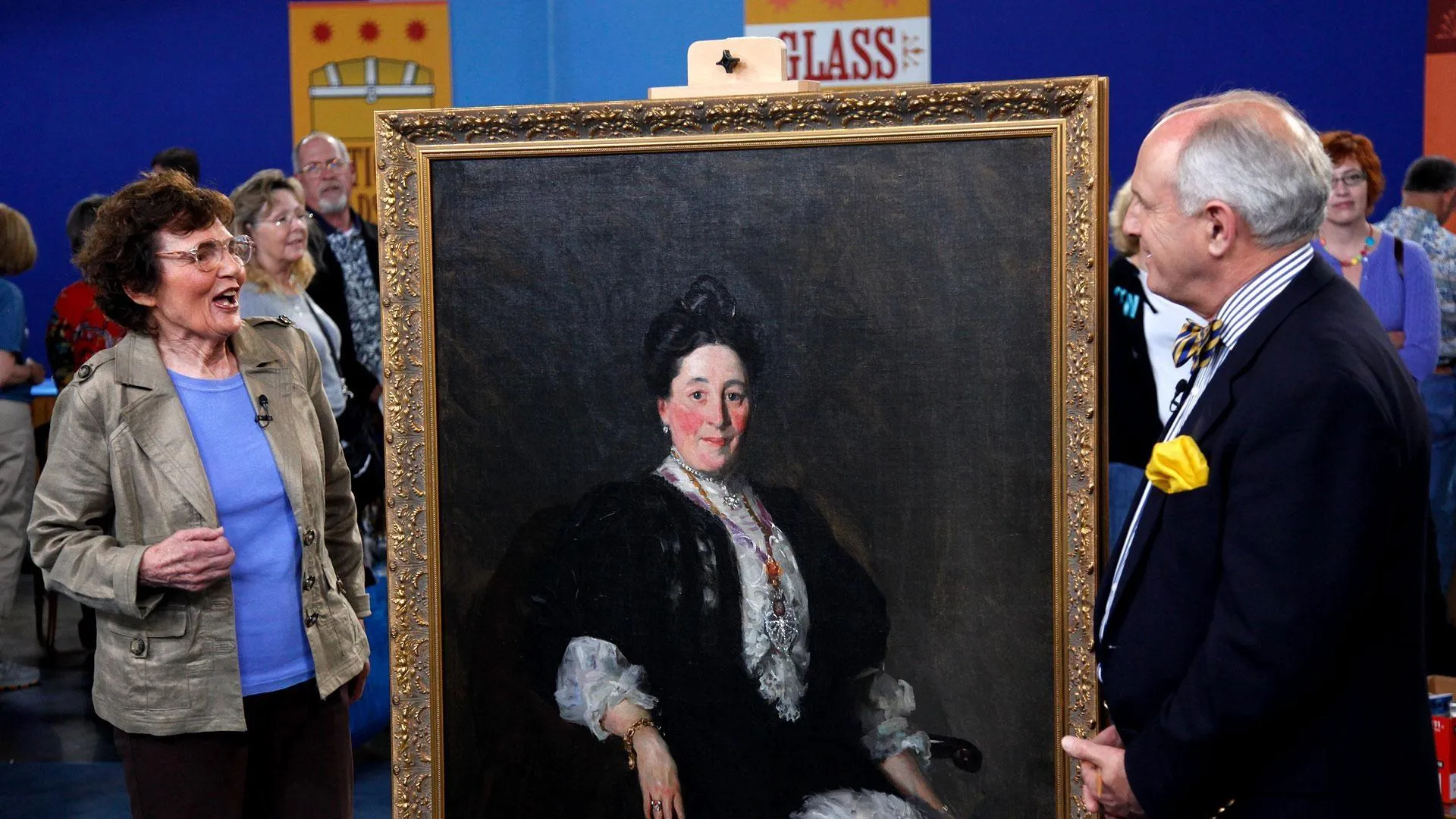GUEST: Well, I got them from a friend who passed away a number of years ago, and I really don't know much about them. He got them from his longtime companion. He thought they were from the Edwardian era.
APPRAISER: The Edwardian era would be right after the turn of the century, around 1900, 1910 or so. I understand that people have admired them in your home. What do they say about them?
GUEST: Well, an interior designer came into my home a little while back and said, "Oh, I know someone that would want to buy those." But I didn't pursue it. I don't want to sell them, so...
APPRAISER: Okay. Well, Edwardian period, that's not the right age.
GUEST: Oh.
APPRAISER: That's way off. They're actually from about 1790,
GUEST: Oh...
APPRAISER: So they're much older than you thought.
GUEST: Oh, wow.
APPRAISER: These are a type of English creamware, or a better term would be pearlware. And what pearlware means is that the cream-color glaze, which we see on these, has a slight blue cast to it. And then they're decorated with this wonderful blue color here, and then this mottled color here. These are decorated to look like a stone called porphyry. Porphyry was a rare and expensive stone that was very popular in the late 18th century.
GUEST: Oh, wow.
APPRAISER: Let's take a look at the bottom here. Now, these have an old label on the bottom. Sometimes old labels are right, sometimes they're wrong, but you still look at them and consider what they say. Apparently it was an old price tag, but someone scratched off the price. It says "pair of obelisks, Enoch Wood." So that gave us a clue who they might be made by. I did some research on these, and they might have been made by Enoch Wood, but more than likely, they were made by the successor of Enoch Wood, which is Wood & Caldwell. Now, in some sources these are attributed to another company, which is related, called Ralph Wood. And these are all factories in Staffordshire, England, which made various types of English pottery, pearlware and so forth, in the late 18th century. This was the height of popularity in the late 18th century. They were very much into Neoclassicism. So these were modeled a little bit after Egyptian obelisks. Now, you see these little balls on the top?
GUEST: Yeah. I was going to ask you about those.
APPRAISER: Those are not original. They were not there when they were made new, and they're not supposed to be there. Now, if you like them and you want to leave them there, there's nothing wrong with that. Or if you want to take them off, you could do that. They don't really hurt the value, but they're not original. What someone's done is they've drilled holes right down the center and inserted those little balls. There's one other thing that's wrong with these. We notice that there's a little chip here on the corner.
GUEST: Yeah.
APPRAISER: Tell me about that.
GUEST: I chipped it.
APPRAISER: You did that. And do you have the piece?
GUEST: I can't find it. (both chuckling)
APPRAISER: Well, keep looking. If you can't find the piece, that could be restored, that could be filled in professionally, or if you can find it, it'll be easier for a restorer to put that back in place and cover that up, or you can leave it alone.
GUEST: Okay.
APPRAISER: Now, they're very popular with collectors of 18th-century English pottery. They're very decorative, which leads to the second factor, is that this sort of thing is so decorative that there are a lot of people who don't care much about English pottery, but they decorate with them. A high-end interior designer... Obelisks are the cat's meow. They look great on the mantel, they look great in several different places. They really have a lot of presence, especially with this faux stone surface. Despite the minor damages, a retail or insurance value for these would fall somewhere between $3,000 and $5,000 easily, perhaps a bit more.
GUEST: No...
APPRAISER: They're really, really spectacular.
GUEST: Wow.
APPRAISER: And actually, it's really hard to find a true pair. The fact that they're still together really enhances the value.
GUEST: Wow, I had no idea. That's amazing.





